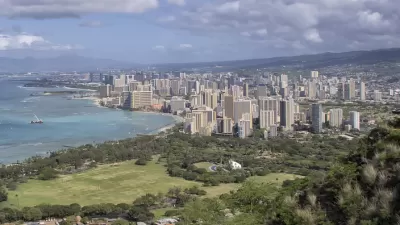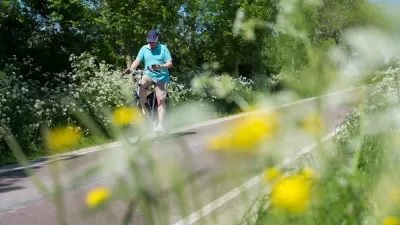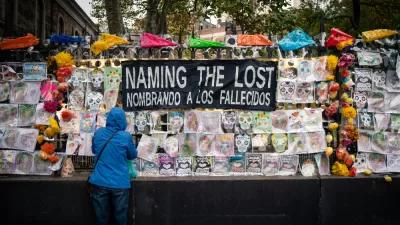A data-driven approach is needed to figure out how the disease has spread in the islands and what can be done to contain it.

In this editorial, Karl Kim, a professor of urban and regional planning at the University of Hawaii, critiques and expresses his frustration with the state's response to the pandemic. As Hawaii struggles to get a handle on the crisis, he makes the case for much more data-sharing and a more data-driven approach to tackle COVID-19.
Kim indicates that there is "a crisis of data, analysis, and risk management" and that there needs to be "a renewed call-to-arms for data scientists, modelers, geo-spatial and statistical analysts to study, map, and figure out how the disease has spread and what can be done to contain it."
He recommends five actions that would help the State of Hawaii do a better job in fighting the pandemic: (1) establish a data clearinghouse for current integrated COVID-19 test, contact tracing, hospitalization, and medical insurance claims data, (2) perform focused quick analyses on the behavioral and locational attributes of those infected and spreading the disease, (3) form interdisciplinary teams of researchers, statisticians, and data scientists who are funded to conduct risk analyses but also review, critique, and share analytical capabilities, (4) integrate mapping, modeling, and risk assessment with planning and decision-making, and (5) ensure widespread community engagement in all phases of data collection, analysis, implementation, and evaluation of mitigation strategies.
Kim knows a thing or two about disasters and ways to mitigate and recover from them. He has spent much of his career studying disasters, and he is the executive director of the Pacific Urban Resilience Lab and the National Disaster Preparedness Training Center.
FULL STORY: Poor data management worsens Hawaii’s COVID-19 crisis

Planetizen Federal Action Tracker
A weekly monitor of how Trump’s orders and actions are impacting planners and planning in America.

Congressman Proposes Bill to Rename DC Metro “Trump Train”
The Make Autorail Great Again Act would withhold federal funding to the system until the Washington Metropolitan Area Transit Authority (WMATA), rebrands as the Washington Metropolitan Authority for Greater Access (WMAGA).

The Simple Legislative Tool Transforming Vacant Downtowns
In California, Michigan and Georgia, an easy win is bringing dollars — and delight — back to city centers.

The States Losing Rural Delivery Rooms at an Alarming Pace
In some states, as few as 9% of rural hospitals still deliver babies. As a result, rising pre-term births, no adequate pre-term care and "harrowing" close calls are a growing reality.

The Small South Asian Republic Going all in on EVs
Thanks to one simple policy change less than five years ago, 65% of new cars in this Himalayan country are now electric.

DC Backpedals on Bike Lane Protection, Swaps Barriers for Paint
Citing aesthetic concerns, the city is removing the concrete barriers and flexposts that once separated Arizona Avenue cyclists from motor vehicles.
Urban Design for Planners 1: Software Tools
This six-course series explores essential urban design concepts using open source software and equips planners with the tools they need to participate fully in the urban design process.
Planning for Universal Design
Learn the tools for implementing Universal Design in planning regulations.
Smith Gee Studio
City of Charlotte
City of Camden Redevelopment Agency
City of Astoria
Transportation Research & Education Center (TREC) at Portland State University
US High Speed Rail Association
City of Camden Redevelopment Agency
Municipality of Princeton (NJ)





























